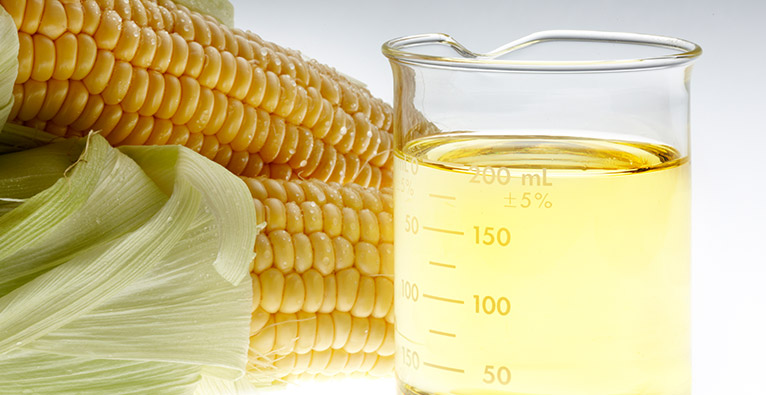
Preparation
The first step of processing corn germ from wet milling or dry milling is to properly prepare the seed for oil removal. The seed is delivered clean; additional cleaning with a magnet and screener may be done to remove any impurities or fines. For dry-milled germ, the seed is conditioned, flaked and sent to solvent extraction. For wet-milled germ, the seed is conditioned, flaked and cooked, then pressed prior to solvent extraction. For smaller capacities, the germ can be full pressed instead of solvent extracted.
Extraction
The wet-milled germ seed is mechanically pressed (pre-pressed) to extract approximately half to three quarters of the available oil so that the solvent extraction can be run more efficiently. This is typical for seeds containing more than 20% oil. The solvent extraction process uses hexane or other solvents to wash the corn oil from the prepared flakes or press cake. The design of the equipment varies so that Crown can optimize the amount of solvent and bed depth needed to efficiently wash the flakes, the contact time of the solvent and flakes, and the power and utilities needed to run the equipment. Corn germ is processed with the Model III Extractor.
Desolventizing
Once the oil has been removed by the solvent, the solvent must be removed from both the flakes and the corn oil. For the flakes, heat and steam are used to strip and recover the residual solvent. For the corn oil, a distillation system is used to recover the solvent. The desolventized flakes are now a product and ready for sale as a good source of protein. The corn oil can be further refined from a crude product to an edible product.
Oil Refining and Processing
Extracted and desolventized corn oil must be further processed to make an edible product. Edible oils are refined to improve the flavor, odor, color and stability using processes that degum, neutralize, bleach and deodorize the oil. These refining processes remove contaminants such as phosphatides, free fatty acids and pro-oxidants.
Further processing of oils and fats is sometimes desired. Some oils are winterized or dewaxed and some are modified to change melting characteristics. Byproducts may be further processed to create value-added products or reduce costs.
Biodiesel
Biodiesel is a renewable fuel derived from fats and oils. Although any source of fat can be used, corn is one of the oils used in this industry. However, the source of the corn oil is typically not edible corn oil as described above but instead the back end of a dry-grind ethanol process.
Oleochemicals
There is a significant number of oleochemicals made from the byproducts of corn oil processing. Whether it’s glycerin from a biodiesel plant or fatty acids from a fat hydrolysis plant, Crown offers many different processes to add value to these fat byproducts.